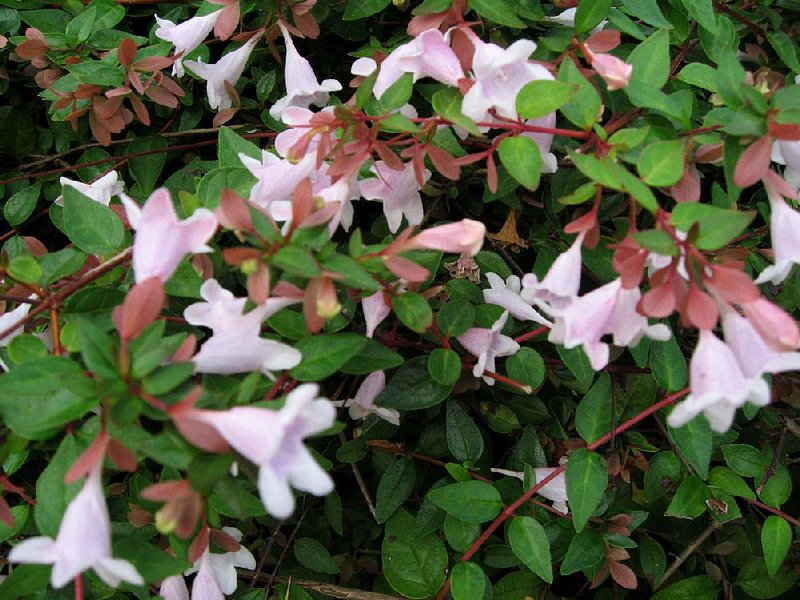I think we are all happy that March is ending. The saying "In like a lion, out like a lamb" has never been truer. It was roaring until midmonth.
To say we are having a late spring is an understatement. Plants have been slow to leaf out, and gardens have been so wet that spring planting is delayed. So now our plants are on warp speed, and so are we, trying to catch up.
APRIL
• There is still time to plant cool-season vegetables. We want to have them planted by mid-April so they have time to grow before it gets hot. We can only hope that we don't go from winter to summer overnight.
• Some vegetables that were planted early last fall are bolting -- setting seeds -- so it is time to harvest those and use them, no matter what stage they are in.
• Although tomato plants are popping up all over in retail outlets, hold off a bit on buying until it warms up. Mid-April to early May is plenty early enough to plant tomatoes. Beans and corn can begin to go in the ground, but heat-loving eggplant, squash and peppers can also wait until midmonth.
• Scale insects seem to be worse than ever on many camellias, azaleas and holly plants. Check the underside of the leaves. If you see white specks covering the undersurface of the leaves or along the stems, you may have tea scale or azalea bark scale. You can prune out heavily infested branches, but systemic insecticides are the best approach. We are also getting increased reports of crape myrtle scale. Properly identify the problem before you start controlling it. If you aren't sure, take a sample to your local county extension office.
• Spring bulbs are making a big display. We are seeing daffodils, hyacinths and tulips all in bloom together, since the cold weather early on gave the early season bulbs a later start. Lightly fertilize now if you haven't already; and allow the foliage to grow for six weeks after they finish flowering. Then you can cut the foliage off. If you cut the leaves too soon, they won't flower well next year.
• We are beginning to see flowers on dogwoods and azaleas, and our gardens are coming alive with color. If your plants need to be pruned, do so immediately after flowering. That is the time to fertilize as well. Spring-blooming plants should be pruned no later than mid-June if you want to give them enough time to recover before they start to set flower buds at the end of the summer.
• If you haven't pruned the summer-blooming butterfly bush, spirea and roses, do it immediately. If you don't prune, they will not flower well this summer.
• If your crape myrtles, abelia and rose of Sharon need pruning, do it soon. These plants all bloom on the new growth, so the key is to prune before they start growing, or at least before they are fully leafed out. While these plants are beginning to grow, they are just starting: You won't delay the onset of flowers too much by pruning now.
• Many lawns are a sea of weeds. The lawn grasses will begin greening up soon, so mow the winter weeds to prevent seed set and dig up the wild onions. Once the lawn is totally green, you can begin to use herbicides again.
• While we have had a taste of spring, we are still getting some cool weather. Hold off moving your houseplants outside until we are sure spring is here. Mid-April to early May is ideal.
• Our winter pansies and violas look great. Many flowering kale and cabbage have begun to bolt and bloom, so you can start pulling them. But fertilize the pansies, violas and dianthus, and they should bloom for another month or two.
• Warm-season annuals are beginning to appear statewide. You can start planting petunias, calibrachoa, geraniums and begonias, which can tolerate some low temperatures, but hold off on lantana, sweet potato vine and coleus, which are easily frost-nipped.
• Visit nurseries and garden centers regularly. We are all ready to start gardening, and the new plants arrive daily.
PLANT OF THE MONTH
Your grandmother probably grew the original green glossy abelia with tiny white, bell-shaped flowers. The plant bloomed all summer and basically took care of itself. And it still does.
It will grow in sun or shade, and as long as it gets some sunlight, it will bloom all season. The bees and butterflies love it.
Today we have even better options for abelia, and they come in a variety of foliage colors as well as flower colors. Mature size of these shrubs varies from 2 to 3 feet tall to 5 to 6 feet tall.
They are not particular about soil types but can't tolerate heavy, wet sites. Once established, they are very drought tolerant.
Good varieties include "Twist of Lime" with white and green variegated leaves and white blooms; "Silver Anniversary" with pink, white and green leaves; and "Kaleidoscope" with yellow, orange and green leaves. "Sunny Anniversary" is a new, yellow flowering form. "Pinky Bells" has small pink blooms.
If you need a tough, durable, evergreen plant for your garden, look at abelia.
Janet B. Carson is a horticulture specialist for the University of Arkansas Cooperative Extension Service.
HomeStyle on 03/28/2015

